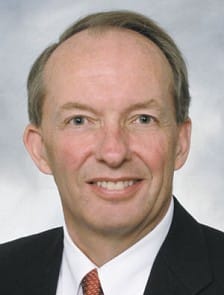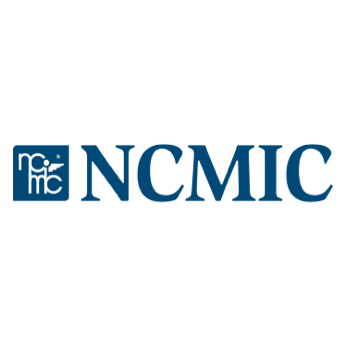Bank CEO says fee caps will force institutions to increase fees elsewhere

Establishing caps on debit card transaction fees makes about as much sense as the federal rules that require Braille instructions on all automated teller machines – even those installed at drive-ups, says Dave Nelson, chairman and CEO of West Bank.
Beginning July 21, the nation’s largest banks will be subject to a 12-cent cap on transaction fees that retailers are charged on each debit card transaction. Currently, the card-issuing banks on average charge more than 1 percent of the transaction amount each time one of their debit cards is swiped at a checkout counter. Smaller institutions such as West Bank will be exempt from the cap, though market pressure may force them to lower their fees to match the larger banks.
“The political intent was to lower the prices we pay at big-box retailers,” Nelson said. “But it’s really a shift of revenue from the banks to big-box retailers, as simple as that.”
Last-ditch effort
The provision, known as the Durbin Amendment of the Dodd-Frank Wall Street Reform and Consumer Protection Act enacted last year, established a two-tiered system of fee caps for banks. Banks with more than $10 billion in assets such as Wells Fargo & Co. will be subject to the 12 cents per transaction cap, but banks under that threshold will be exempt.
Earlier this month, the U.S. Senate rejected a last-ditch effort by the banking industry to postpone the effective date of the Durbin Amendment for another six months. The measure had already been delayed from a planned April 21 start date.
Prior to the Senate vote on June 8, Nelson said he was hopeful the cap would be postponed so that Congress could rethink the measure.
“Probably the worst thing for the consumer is that the free or almost-free banking system will go away,” he said. “Even though (banks) aren’t making any money off of small deposits, they’re able to make money off the transaction fees.”
Nelson said the caps could reduce banks’ interchange fee income by as much as 70 percent.
“So if you had made $100,000 in that category, now you’re making $30,000,” he said. “It is a very significant source of revenue for banks of any size.”
In an Independent Community Bankers of America survey, more than 70 percent of the bankers who responded said they would stop offering free checking to make up for the loss of interchange fee income if the Durbin amendment went into effect, Nelson noted. “And just about everybody says they’ll add fees,” he said. Banks may also become choosier about issuing debit cards, Nelson said.
A big deal
On the other side of the checkout counter, however, retailers have been lobbying for years for Congress to curb debit card fees.
“It really is a big deal for our industry, and for all retail, really,” said Jerry Fleagle, president of the Iowa Grocery Industry Association. Interchange fees now represent the second-largest expense category for grocery stores, second only to personnel costs, he said.
“It’s actually now exceeded utility use; it’s just amazing how the number has grown,” he said. “Not just because more people are using (debit cards), but because the fees have increased so much.”
Counterintuitively, the interchange fees tend to rise, not fall, under the current system, because the payment networks are negotiating higher rates to attract or keep the banks’ interchange business, Fleagle said.
Studies differ on the impact that the cap may have. A study by Cardhub.com said interchange fees might decrease by as much as $14.1 billion per year, but the Boston Consulting Group concluded in its study that payments to the banking industry from retail transactions would decrease by $25 billion.
Fleagle said the competitive nature of the grocery industry makes it very likely that grocers will pass savings in fees along to their customers.
“Net profit margins in the grocery industry have never exceeded 2 percent net profit,” he said. “I really think that’s the proof in the pudding.”
Banks aren’t being very consumer-friendly in their approach to the change in fees, he added.
“I find it interesting to hear banks say, ‘We’ll pass this on in fees,’ like they’re entitled to that money,” Fleagle said.
Downward pressure
The interchange fee cap on large banks will create downward pressure on interchange fees charged by the smaller banks, said Dan Kramer, vice president of marketing and merchant operations for SHAZAM Inc. The Johnston-based electronic funds transfer network serves nearly 1,600 financial institutions in 30 states, acting as a conduit between banks and retailers for the transactions.
“(A retailer) can’t discriminate against Polk County Bank (by not accepting its cards),” Kramer said, “but he can say, ‘We’ll negotiate this price.’”
Such negotiations have been occurring ever since debit card interchange fees were first established more than 10 years ago, he said. “This isn’t something new, but now what Congress has given us is a benchmark,” he said. “It’s an artificial price cap.”
SHAZAM has experienced compound growth of about 12 percent annually in transaction volume for debit cards for the past several years, and Kramer said he expects that trend to continue.
“We don’t see a reduction in transactions happening because of this,” he said. “Our transaction counts are only going to increase. But what will be introduced in the market that may be a disincentive are fees to the cardholders.”
Nelson said it’s impossible for fees to be capped for larger banks and not affect the fees that smaller banks will charge. “We all use the same network,” he said.
“It just won’t work that way. I’m not aware of any example where government price fixing has worked in the history of the country, and this is price fixing.”










